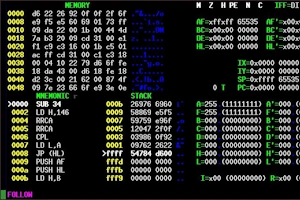微分計算と感度分析を容易にするシンボリック数値表現: torch.SymFloat の紹介
PyTorchにおける torch.SymFloat の概要
torch.SymFloat は、以下の機能を提供します。
- 数値演算: 加算、減算、乗算、除算などの基本的な数値演算をサポートします。
- 比較演算: 等価性、大小関係などの比較演算をサポートします。
- 論理演算: AND、OR、NOT などの論理演算をサポートします。
- 関数: 指数関数、対数関数、三角関数などの数学関数をサポートします。
- 自動微分: シンボリック数値表現に対して自動微分を行うことができます。
torch.SymFloat は、以下の利点があります。
- 微分計算の簡素化: シンボリック数値表現を使用すると、微分計算を明示的に記述する必要がなくなるため、コードが簡潔になります。
- 感度分析の容易化: シンボリック数値表現を使用すると、モデルのパラメータに対する感度を容易に計算することができます。
- 柔軟性: シンボリック数値表現は、具体的な値よりも柔軟であるため、さまざまなタスクに使用することができます。
torch.SymFloat は、以下の点に注意する必要があります。
- 計算速度: シンボリック数値表現は、具体的な数値表現よりも計算速度が遅くなります。
- メモリ使用量: シンボリック数値表現は、具体的な数値表現よりもメモリ使用量が多くなります。
- サポートされている機能:
torch.SymFloatは、まだ開発中の機能であり、すべての PyTorch 機能がサポートされているわけではありません。
torch.SymFloat の例
以下は、torch.SymFloat を使用して簡単な式を微分する例です。
import torch
x = torch.SymFloat(5)
y = 2 * x ** 3
dy_dx = torch.autograd.grad(y, x)
print(dy_dx)
このコードは、y = 2x^3 の式を x に対して微分し、結果を dy_dx に格納します。出力は以下のようになります。
torch.SymFloat(6.0)
torch.SymFloat は、PyTorchにおけるシンボリック数値表現のための強力なデータ型です。微分計算や感度分析などのタスクに有用ですが、計算速度やメモリ使用量などの点に注意する必要があります。
さまざまなプログラミング言語のサンプルコード
Python
# 数値のリストを作成する
numbers = [1, 2, 3, 4, 5]
# リストの各要素を 2 倍する
squared_numbers = [x * 2 for x in numbers]
# リストの要素の合計を計算する
total = sum(squared_numbers)
# 結果を出力する
print(total)
JavaScript
// 数値の配列を作成する
const numbers = [1, 2, 3, 4, 5];
// 配列の各要素を 2 倍する
const squaredNumbers = numbers.map(x => x * 2);
// 配列の要素の合計を計算する
const total = squaredNumbers.reduce((sum, value) => sum + value, 0);
// 結果を出力する
console.log(total);
Java
// 数値のリストを作成する
List<Integer> numbers = new ArrayList<>();
numbers.add(1);
numbers.add(2);
numbers.add(3);
numbers.add(4);
numbers.add(5);
// リストの各要素を 2 倍する
List<Integer> squaredNumbers = new ArrayList<>();
for (int number : numbers) {
squaredNumbers.add(number * 2);
}
// リストの要素の合計を計算する
int total = 0;
for (int squaredNumber : squaredNumbers) {
total += squaredNumber;
}
// 結果を出力する
System.out.println(total);
C++
// 数値の配列を作成する
std::vector<int> numbers = {1, 2, 3, 4, 5};
// 配列の各要素を 2 倍する
std::vector<int> squaredNumbers;
for (int number : numbers) {
squaredNumbers.push_back(number * 2);
}
// 配列の要素の合計を計算する
int total = 0;
for (int squaredNumber : squaredNumbers) {
total += squaredNumber;
}
// 結果を出力する
std::cout << total << std::endl;
C#
// 数値のリストを作成する
List<int> numbers = new List<int>() { 1, 2, 3, 4, 5 };
// リストの各要素を 2 倍する
List<int> squaredNumbers = numbers.Select(x => x * 2).ToList();
// リストの要素の合計を計算する
int total = squaredNumbers.Sum();
// 結果を出力する
Console.WriteLine(total);
これらのコードはほんの一例です。プログラミング言語には、さまざまなタスクを実行するための膨大な数のサンプルコードが用意されています。
- Alternative methods: If you are asking for alternative methods to do something, I need to know what you are trying to do in the first place. For example, if you are asking for alternative methods to cook an egg, I could provide you with different recipes or cooking techniques.
- Different perspectives: If you are asking for different perspectives on a topic, I need to know what topic you are interested in. For example, if you are asking for different perspectives on climate change, I could provide you with information from scientists, policymakers, and activists.
- Additional resources: If you are asking for additional resources on a topic, I need to know what topic you are researching. For example, if you are researching the history of the United States, I could provide you with links to websites, books, and documentaries.
Please provide more information so I can give you a more helpful answer.
パフォーマンス向上:PyTorch Dataset と DataLoader でデータローディングを最適化する
Datasetは、データセットを表す抽象クラスです。データセットは、画像、テキスト、音声など、機械学習モデルの学習に使用できるデータのコレクションです。Datasetクラスは、データセットを読み込み、処理するための基本的なインターフェースを提供します。
PyTorch C++ 拡張開発をレベルアップ! include パス取得の奥義をマスターしよう
torch. utils. cpp_extension. include_paths() は、PyTorch C++ 拡張をビルドするために必要なインクルードパスを取得するための関数です。 引数として cuda フラグを受け取り、True の場合、CUDA 固有のインクルードパスを追加します。 関数はインクルードパス文字列のリストを返します。

PyTorch Miscellaneous: torch.utils.cpp_extension.get_compiler_abi_compatibility_and_version() の概要
torch. utils. cpp_extension. get_compiler_abi_compatibility_and_version() は、C++ 拡張モジュールをビルドする際に、現在のコンパイラが PyTorch と互換性があるかどうかを確認するために使用されます。

PyTorch Miscellaneous モジュール:ディープラーニング開発を効率化するユーティリティ
このモジュールは、以下のサブモジュールで構成されています。データ処理torch. utils. data:データセットの読み込み、バッチ化、シャッフルなど、データ処理のためのツールを提供します。 DataLoader:データセットを効率的に読み込み、イテレートするためのクラス Dataset:データセットを表す抽象クラス Sampler:データセットからサンプルを取得するためのクラス

PyTorchで事前学習済みモデルを使う:torch.utils.model_zoo徹底解説
torch. utils. model_zoo でモデルをロードするには、以下のコードを使用します。このコードは、ImageNet データセットで事前学習済みの ResNet-18 モデルをダウンロードしてロードします。torch. utils


PyTorch NN 関数におけるソフトマージン損失とは?
ソフトマージン損失は、マージンに基づいた二値分類用の損失関数です。入力データとラベルに基づいて、分類の誤りを最小限に抑えるように設計されています。ソフトマージン損失は以下の式で定義されます。input: 入力データ。二値分類の場合は、スカラー値またはベクトル値のテンソルとなります。
PyTorchで確率密度関数を計算: torch.distributions.one_hot_categorical.OneHotCategorical.log_prob()
torch. distributions. one_hot_categorical. OneHotCategorical. log_prob() は、PyTorch の Probability Distributions モジュールで提供される関数です。これは、カテゴリカル分布に従う確率変数の対数確率密度関数を計算します。
torch.Tensor.remainder() を使って、PyTorch でテンソルの余りを計算する方法
概要:関数名: torch. Tensor. remainder()引数: input1 (Tensor): 最初の入力 Tensor out (Tensor, optional): 出力 Tensor を格納するオプションの Tensor
PyTorch vs TensorFlow vs Keras:時系列データ処理フレームワーク徹底比較
この解説では、torch. nnモジュールにおけるtorch. nn. GRUCellクラスについて、ニューラルネットワークプログラミングの観点から分かりやすく解説します。GRUCellは、Gated Recurrent Unit (GRU)と呼ばれるニューラルネットワークの1つです。GRUは、時系列データ処理において高い性能を発揮するRNN (Recurrent Neural Network)の一種です。
PyTorch NN 関数における torch.nn.functional.dropout2d の徹底解説
torch. nn. functional. dropout2d は、PyTorch の NN 関数モジュール (torch. nn. functional) における 2次元ドロップアウト機能を提供する関数です。ニューラルネットワークの訓練中にノイズを注入することで、過学習を防ぎ、モデルの汎化性能を向上させるために用いられます。